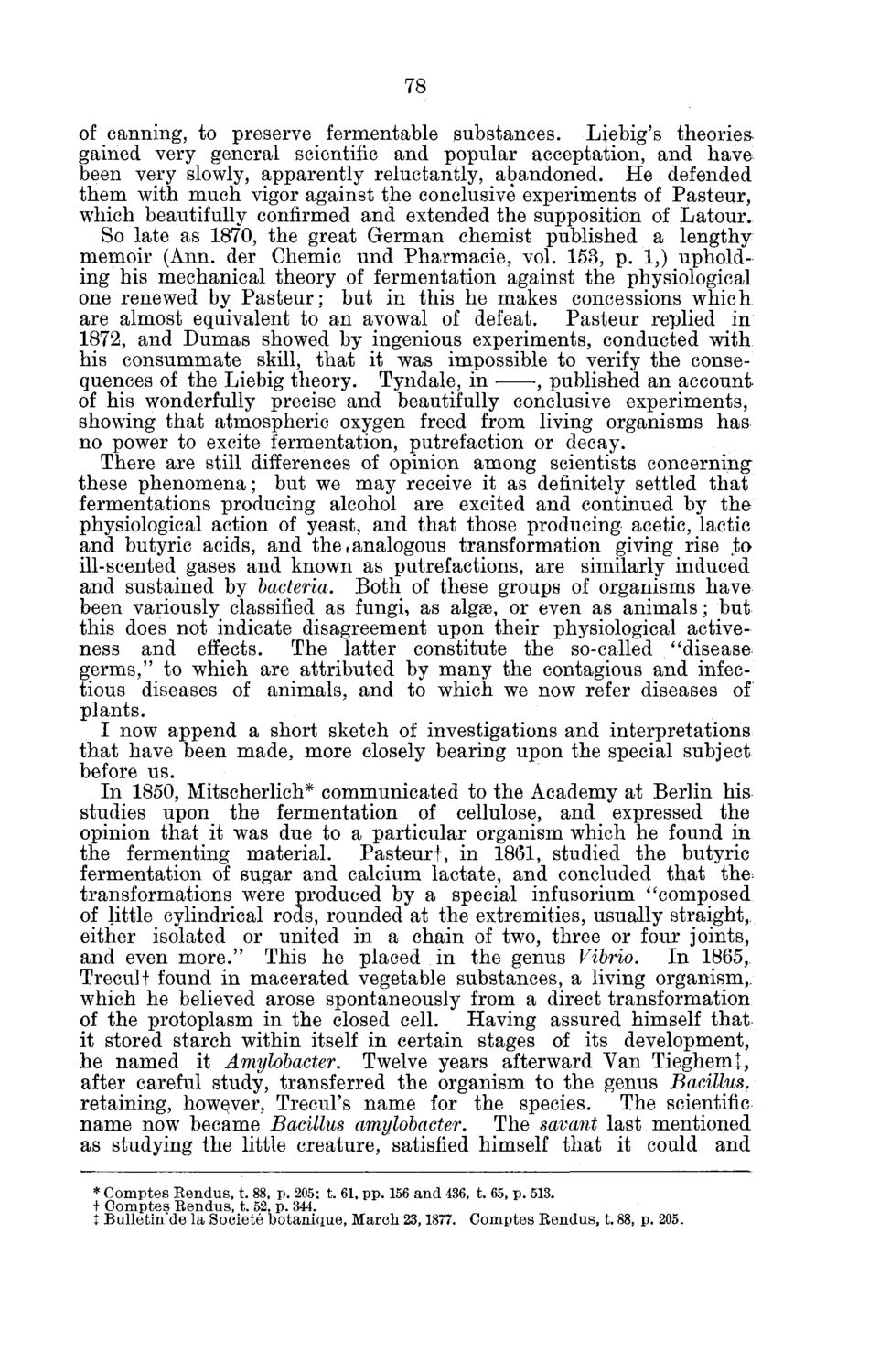| |
| |
Caption: Board of Trustees Minutes - 1880
This is a reduced-resolution page image for fast online browsing.

EXTRACTED TEXT FROM PAGE:
78 of canning, to preserve fermentable substances. Liebig's theories gained very general scientific and popular acceptation, and have been very slowly, apparently reluctantly, abandoned. He defended them with much vigor against the conclusive experiments of Pasteur, which beautifully confirmed and extended the supposition of Latour. So late as 1870, the great German chemist published a lengthy memoir (Ann. der Chemic und Pharmacie, vol. 153, p. 1,) upholding his mechanical theory of fermentation against the physiological one renewed by Pasteur; but in this he makes concessions which are almost equivalent to an avowal of defeat. Pasteur replied in 1872, and Dumas showed by ingenious experiments, conducted with his consummate skill, that it was impossible to verify the consequences of the Liebig theory. Tyndale, in , published an account of his wonderfully precise and beautifully conclusive experiments, showing that atmospheric oxygen freed from living organisms has no power to excite fermentation, putrefaction or decay. There are still differences of opinion among scientists concerning these phenomena; but we may receive it as definitely settled that fermentations producing alcohol are excited and continued by the physiological action of yeast, and that those producing acetic, lactic and butyric acids, and the«analogous transformation giving rise to ill-scented gases and known as putrefactions, are similarly induced and sustained by bacteria. Both of these groups of organisms have been variously classified as fungi, as algae, or even as animals; but this does not indicate disagreement upon their physiological activeness and effects. The latter constitute the so-called "disease germs," to which are attributed by many the contagious and infectious diseases of animals, and to which we now refer diseases of plants. I now append a short sketch of investigations and interpretations that have been made, more closely bearing upon the special subject before us. In 1850, Mitscherlich* communicated to the Academy at Berlin his studies upon the fermentation of cellulose, and expressed the opinion that it was due to a particular organism which he found in the fermenting material. Pasteurt, in 1861, studied the butyric fermentation of sugar and calcium lactate, and concluded that the= transformations were produced by a special infusorium "composed of little cylindrical rods, rounded at the extremities, usually straight, either isolated or united in a chain of two, three or four joints, and even more." This he placed in the genus Vibrio. In 1865, Trecult found in macerated vegetable substances, a living organism, which he believed arose spontaneously from a direct transformation of the protoplasm in the closed cell. Having assured himself that it stored starch within itself in certain stages of its development, he named it Amylobacter. Twelve years afterward Van Tieghemt, after careful study, transferred the organism to the genus Bacillus. retaining, however, Trecul's name for the species. The scientific name now became Bacillus amylobacter. The savant last mentioned as studying the little creature, satisfied himself that it could and * Comptes Eendus, t. 88, p. 205: t. 61, pp. 156 and 436, t. 65, p. 513. + Comptes Rendus, t. 52, p. 344. + Bulletin'de la Societe botanique, March 23,1877. Comptes Rendus, t. 88, p. 205.
| |